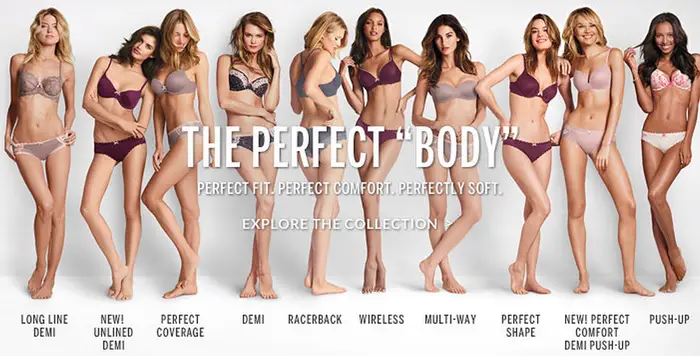The rise in consumer power: how marketing has changed in the last decade
“Technology will make our lives richer, more connected, more productive and more fulfilling in profound and exciting ways.”
Bill Gates probably didn’t comprehend the enormity of these words back in 2008, but it’s safe to say he was right on all accounts. Who would have thought the internet would take over our lives to such an extent we now spend on average 413 minutes on it per day?!
And from a marketing perspective this has had an inordinate impact. TV was no longer the go-to option for brands; social media offered new ways of reaching new audiences; and access to real-time data enabled campaigns to become more personalised and targeted.
We take a look at some of the extraordinary changes that have happened in the world of marketing over the last 12 years.
Social media explodes
Facebook introduces ‘likes’ on external pages; Instagram, Snapchat and TikTok are launched; video marketing took off in a big way. If the 2000s was our first foray into social media, then the decade that followed was when it took over. In fact in 2010, there were less than 1 billion social media users, but today there are 4.7 billion users around the world, or to put it another way 59% of the total global population!
And as people, brands and organisations started to realise social media was in effect a one-stop shop for sharing information, showcasing products and distributing news in a variety of different formats, so it became an integral part of a brand’s marketing strategy. Not only did it help consumers easily find out about your brand and products, it also allowed you to target people you couldn’t reach using more traditional marketing techniques, namely the Millennials!
And social media also enabled brands to display a more fun and engaging side. Old Spice’s campaign was so successful they created a ‘Response campaign’ which saw the actual Old Spice guy respond to social media comments. It attracted 5.9 million YouTube views in day one and doubled sales!
And as the internet got faster and more reliable, video streaming across social media became more commonplace. In 2010 YouTube hit 2 billion views; live broadcasting took off and today 86% of businesses use video as a marketing tool.
Rise of the influencers
And then of course, there was the rise of influencers. Suddenly, anyone, and we mean anyone, could have a voice and become a celebrity. And just like brands used movie stars in the past to promote their products, so they started to use influencers. But there was a crucial difference. Rather than stars appearing in ads obviously created by the brand, influencer marketing saw people using their own social media channels to promote a product. These ‘word-of-mouth’ recommendations, even if those words were put there by the brands, were an invaluable marketing strategy for many companies.
However, it was easy to get wrong as Snickers demonstrated beautifully back in 2012 when they got Katie Price on board for their ‘You’re not you when you’re hungry’ campaign. Her posts, which included “Great news about China’s GDP figures!!” and other political statements prompted followers to think her account had been hacked! And just to add insult to injury it became the first influencer marketing campaign to be investigated by the ASA.
And, of course, in the last few years, there has been an ongoing debate about whether people making a living out of being an ‘influencer’ really love the products they are promoting or are just in it for the money. Cynicism and marketing seem to go hand in hand!
Data gets big
Knowing who your customer is, why they buy and how to target them in the right way at the right time has long been a marketer’s dream and the 2010s helped fulfil it.
Web analytics allowed you to see how visitors found your website, what pages they visited and how long they stayed; social media analytics informed you when your target audience were online, where they were from and what content resonated best; and marketing automation software allowed you to use data to send specific campaigns to specific people about things they were actually interested in. Even better, you could see in real-time whether marketing efforts were working and make improvements if necessary.
Unsurprising then, that Martech is now a $121.5 billion market worldwide or that consumer data became king for brands.
But being able to collect and keep this type of detailed data also raised serious issues around privacy and ownership. In 2018, GDPR launched, giving users more control over what data was stored on them and how it was used, while also ensuring companies became responsible for their users’ data.
But getting to grips with these new regulations wasn’t easy and saw many caught out including Google, Amazon and Apple.
Marketing gets mobile
If mobile marketing was born in the noughties, then the next decade was when it became the norm. Daily consumption on the mobile internet saw a 504% increase between 2011 and 2019 (today 58.26% of global web traffic is through mobile devices); in 2014 mobile exceeded desktop usage for the first time; and in 2015 Google started to penalise websites which didn’t have a mobile friendly version by pushing them down the search results.
Mobile was no longer an ‘add-on’, but a way to really stand out from your competitors. And Nivea did exactly that with their ‘Protection Ad’. Coupling their mobile strategy with a print campaign, it featured a bracelet and an app to alert parents if their child wandered off on the beach. It won a number of awards and reinforced their brand position of offering protection.
Consumers start to gain power
While the rise of the internet and social media was undoubtedly a turning point in marketing for brands, it was also a turning point for consumers. No longer did they have to sit back and be bombarded with messages, they could have a say, and boy, they did!
Social media allowed consumers not just to take part in a conversation, but also control it and if brands messed up, well, they could be brutal.
Victoria’ Secret’s ‘The perfect body’ campaign resulted in a backlash on social media and a 15,000 strong petition calling on them to apologise and end the campaign;

while Dove faced a PR disaster when an ad showed a black woman turning white reminded social media users of racist soap ads from the 1900s.
And it wasn’t just social media where consumers could have a voice. Online reviews and blogging platforms allowed consumers to share experiences and opinions more widely with many reluctant to buy anything unless they had seen independent recommendations. But not all is what is seems, as just this year the Trustpilot CEO was called to resign over a fake reviews scandal.
The changing face of advertising
And as consumers started to question rights and wrongs and expected brands to talk to their values, so the face of advertising started to subtly change. In 2019, gender stereotypes were banned with this ad for the VW eGolf falling foul of the new regulations;
and diversity and inclusion started to be embraced as brands attempted to appeal to an ever diverse target audience. Not everyone has got it right (Gillette jumping on the #MeToo bandwagon was an ill-conceived move), and we would argue trying to please everyone all of the time is not an effective marketing strategy.
But when you look back at the questionable ads of the 1950s and 1960s, we are definitely moving in the right direction, and who knows what the metaverse has in store for marketing in the coming decades.
